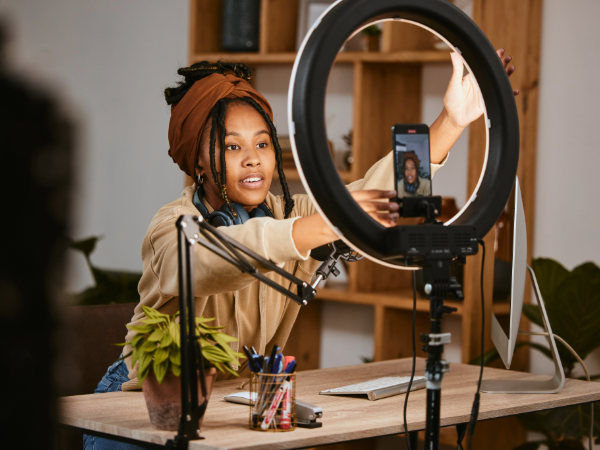In a digital world where attention spans are short and ad-blockers are everywhere, brands are turning more than ever to influencers. But what actually makes an influencer successful? Turns out, it’s not just their follower count.
A new study by UAB Collat School of Business marketing professor Parker Woodroof, Ph.D., and his co-authors sheds light on the hidden ingredients behind influencer effectiveness.
Published in the Journal of Interactive Marketing, the research titled “Signals for Success: The Intersection of Influencer Linguistic Personality, Content, and Follower Size” analyzes 961 Instagram posts from 71 fashion influencers. It dives deep into how the words and photos influencers use significantly impact engagement, especially when considering follower size.
Agreeableness Matters Most
The researchers used IBM Watson's Personality Insights tool to measure the influencers’ “linguistic personality,’” the psychological traits inferred from their language. Of all the Big Five traits (extroversion, agreeableness, openness, conscientiousness, and emotional stability), one stood out: agreeableness.
“Agreeable language positively impacted engagement," the paper states, suggesting that warm, cooperative, and compassionate language fosters trust and deeper connections with followers. "Language is not just a communication tool; it shapes perceptions, builds trust, and fosters relationships.”
Interestingly, traits like extroversion and openness, often assumed to be assets in the social media world, didn’t have a direct significant impact on engagement rates unless follower size was factored in.
Content Is King, but Authenticity Is Queen
Beyond personality, the study highlights the impact of content characteristics. Posts featuring the product front and center actually hurt engagement, supporting the idea that obvious sales pitches turn audiences off.
“Including the product in the photo had a significant negative effect on engagement,” the authors wrote. Instead, posts where the influencers themselves appeared were generally more engaging, especially for those with larger followings. Hashtags also turned out to be a double-edged sword. While they can boost discoverability, too many hashtags lowered engagement. Emojis, surprisingly, didn’t have a statistically significant effect.
Follower Size Changes the Game
Another key insight in the study: an influencer’s follower size dramatically alters what strategies work best.
“For users with lower follower size, extroversion, openness, agreeableness, and emotional stability were more impactful,” the researchers explain. In smaller communities, followers crave intimacy, authenticity, and emotional resonance. But for influencers with larger audiences, audiences preferred signals of conscientiousness like professionalism, consistency, and reliability over bubbly extroversion.
This suggests that micro-influencers (those with 10,000 to 100,000 followers) should focus on being relatable and emotionally expressive, while macro-influencers must project a more polished, trustworthy persona to succeed.
Practical Lessons for Brands
The implications for marketers are clear. Choosing the right influencer isn’t just about numbers, it’s about the right personality, the right content strategy, and understanding how these elements interact with audience size. “Selecting the right influencer is only part of the strategy,” the study stresses. “Brands must also consider the linguistic personality and content elements that will maximize consumer interaction.”
In an era where “authenticity” is increasingly hard to fake, this research offers a blueprint for influencers and brands alike: speak warmly, show yourself (not just the products), and understand that one size does not fit all when it comes to followers.

